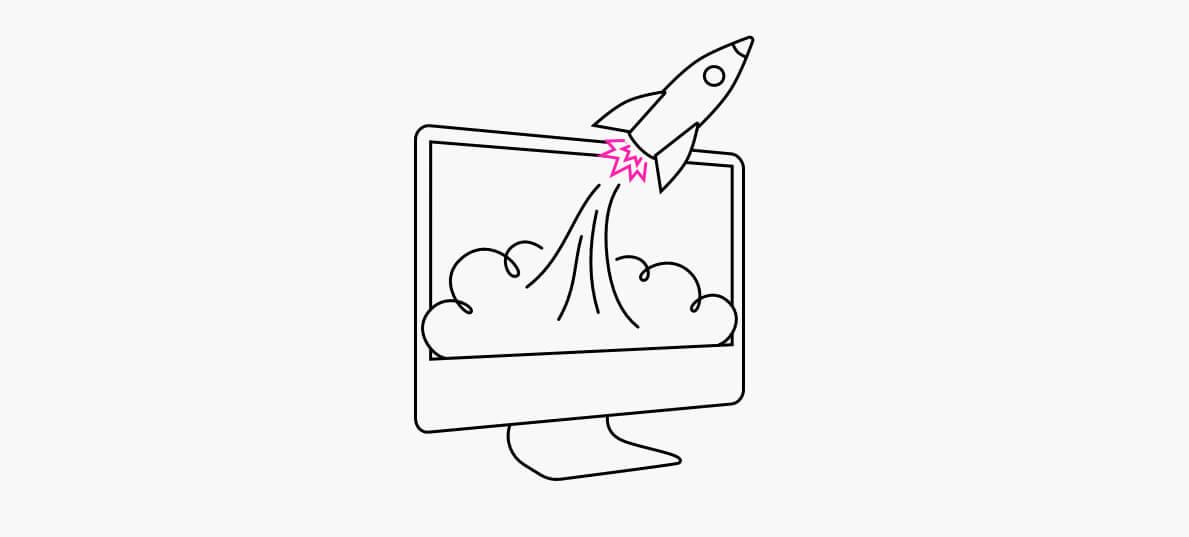Better support and security
Magento has worked tirelessly to improve the platform with each new iteration, the latest being version 2.3 released on 28th November 2018.
In June 2020 support and security patches will cease to be updated for Magento 1 — quality fixes have been dwindling since 2015 and have almost entirely ceased. Research has found that 90% of Magento 1 websites are at risk of being hacked due to unpatched vulnerabilities.
The longer old extensions are being used on your website, the more time hackers have to find those vulnerabilities. Migrating to Magento 2 will give you the continued support and security to make sure that your business is protected from any unnecessary security breaches.

Magento 1 recently released a patch to upgrade to PHP 7.2, which will help with security for now. However, if any security issues are discovered for Magento 1 after June 2020, there won’t be any further updates to protect your website — you will have to action these yourself or find someone to do them for you.
The Magento 1 patch upgrade to PHP 7.2 doesn’t apply to extensions. Unless the extension vendors provide updates these will continue to use PHP 5.6, which came to its end of life on 31st December 2018, putting these areas of your website at risk.
Latest extensions
The move to Magento 2 is exciting for third-party developers, who now get to work with the latest coding to build useful, fast and attractive extensions. As more developers create new extensions and upgrade their current iterations to Magento 2, versions you use now on Magento 1 may eventually no longer be supported.

The latest extensions provide more options to fulfil your website requirements, and with lots of businesses already making the move, you don’t want to fall behind your competitors.
It’s worth mentioning that Magento has some of the best and most affordable extensions for eCommerce websites, helping you boost the usability of your store cost-efficiently.

Improved usability
One of the common issues raised with Magento 1 was that the back-end or admin area was over-complicated and difficult to use. This has been addressed in Magento 2 by reworking the user experience and introducing a more simplified admin dashboard.
The checkout has also seen vast improvements in usability. It has been streamlined, getting your customers from basket to completed order quicker. The highly customisable checkout process requires fewer steps and less customer information due to a new feature which allows your customers to create a profile, allowing them to checkout faster.
This change to the purchasing process aims to reduce the time spent at checkout, — increasing conversions and decreasing abandoned baskets.

In a recent migration from Magento 1 to 2 with Funkin Cocktails, they saw a 21% increase in eCommerce conversion rates for their new website. When moving from a Magento 1 to 2 website, you need to rework all of the code as Magento 2 uses more advanced coding. This meant we had the opportunity to redesign the website, improve the user experience and fully integrate their ERP system to the website during the migration.
SEO improvements
Faster loading times are a key benefit of moving from Magento 1 to Magento 2, thanks to full-page caching Magento has offered in both their Open Source and Enterprise Editions.
Improved speed and a mobile-first approach are not only beneficial for your SEO, but for a crowded market with little patience, it can be the difference between making a sale and failing.
Magento 2 works seamlessly across a variety of devices including desktop, tablet and mobile, falling in line with the demands of Google’s ever-changing algorithms. It could, therefore, be seen more favourably by the search giant. Not to mention, Magento 2 is on average 50% faster than Magento 1 — hello improved SEO.
Magento version 2.3

With the launch of the latest version of Magento 2 comes the introduction of Web Progressive App (PWA) support. This grants the user an app experience via web capabilities, supporting the mobile-first approach Magento 2 is undertaking. This means that rather than a conventional native app build, which requires a separate build for both IOS and Android, a single build can be created and accessed via the web by both operating systems.
In addition to this, version 2.3 brings further security improvements with updates to Google’s reCAPTCHA and two-factor authentication. ReCAPTCHA protects its clients from spam via contact forms and registration pages, and two-factor authentication means further protection for admin portals.
Those interested in the more simplified admin we mentioned earlier, might be happy to know that with 2.3 comes ‘Page Builder’. This brings the ability to create pages without the need for coding.
Quite possibly the most standout addition to Magento version 2.3 is Multi-Source Inventory (MSI). Businesses who operate multiple stores would have to explore options on how to link their stock management systems from those sources into Magento. MSI grants this ability without the need for a third-party extension.
The migration process
Here’s a quick overview of the steps you will need to take to migrate from Magento 1 to 2.

- Review your website, looking at the design, user experience, website user stats, conversion rate and decide how it will meet the needs of your customers.
- Review the extensions you currently have, checking their availability on Magento 2 and if there are any better ones for your website.
- Start the build of your new website, new functionality and design on a staging Magento 2 website.
- Migrate the database and core store information onto Magento 2.
- Upgrade all extensions running on your new website to ensure optimum performance and protection.
- Testing and content population.
- Final tests and go live!
Don’t miss your chance
Magento development cycles can take longer than most anticipate, especially if you need to integrate with a data management or ERP system. Because Magento 1 is built for PHP 5 and Magento 2 is working from PHP 7 and onwards, the migration process isn’t as simple as pressing a migrate button. You will need a developer to bring your old code in line with the new.

With the 18 month notice period already in effect, the need for a reliable and trustworthy Magento partner will intensify. This is one of the reasons why now is the best time to start considering making the move to Magento 2 and getting your project scheduled in.
We are experienced

Selesti's Magento specialists have helped our clients migrate from Magento 1 to Magento 2 and improve functionality by rewriting and reorganising data management systems to create a more seamless user experience and, in turn, improved conversion rate.

